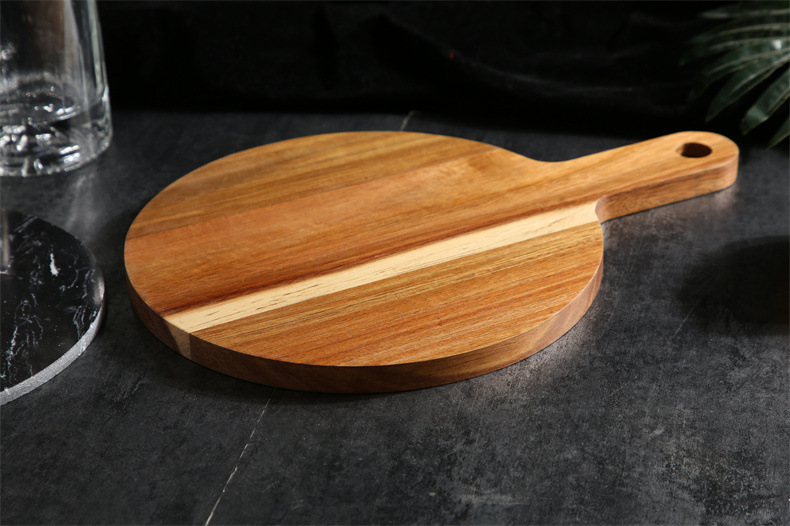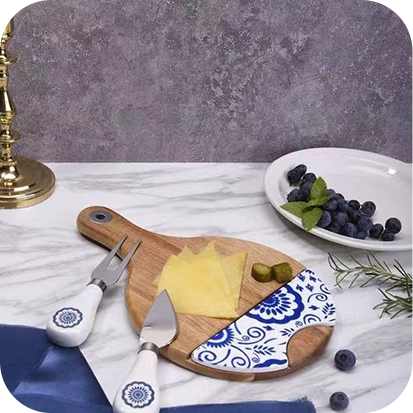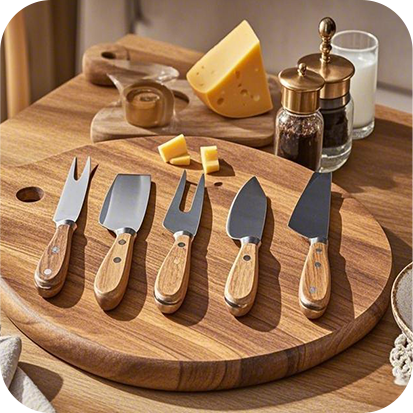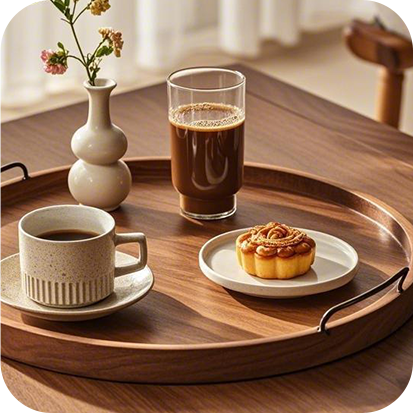Nature vs. Industry: Rethinking Quality Standards in Wooden Cutting Boards
Nature vs. Industry: Rethinking Quality Standards in Wooden Cutting Boards
In a marketplace dominated by mass-produced goods, consumer expectations are increasingly shaped by industrial standards—uniformity, flawlessness, and identical reproduction. But wooden cutting boards, crafted from natural materials, challenge these norms. The very things industrial thinking calls “defects”—like grain variation, surface knots, or color inconsistency—are essential elements of real wood.
Industrial Expectations: Uniformity and Perfection
In factory-line production, especially with plastics and engineered materials, every item is expected to look and feel identical. From shape to texture, this aesthetic consistency is perceived as a mark of quality.
However, when applied to wooden kitchenware, this mindset can be misleading. Boards like the Food hygiene standard customizable Acacia wood Cheese platter board are created from unique slabs of Acacia wood. Each one reflects years of natural growth—rings, knots, mineral stains, and grain shifts—that machines can’t duplicate.
Industrial expectations may lead some customers to view these traits as quality issues, when in reality, they indicate that the product hasn’t been chemically altered, overly processed, or laminated.
The Human Element in Wood Selection
When a craftsman chooses a piece of wood for a board like the Sustainable food-safe customizable Acacia wood Cheese board, they consider not just size and flatness but also the character and story told by the grain.
Slight warps, color contrast, or end-grain exposure aren’t manufacturing failures—they’re part of preserving the authenticity of the wood. This approach creates products that look natural, feel warm, and resonate emotionally in the kitchen.
Mass-produced items remove this narrative. Wood items treated with heavy bleach, lacquer, or synthetic filler may appear more uniform, but they lose their connection to the raw material and potentially introduce chemicals into food-contact surfaces.
Addressing Customer Misunderstandings
Many returns or complaints in the wooden board industry result from a simple misunderstanding: customers expecting every Compostable material Engraved Acacia wood Snack board to look identical. Clear marketing, product photography, and education help bridge the gap.
Retailers and manufacturers should:
Include disclaimers about natural variation
Use unedited photos showing different grain patterns
Offer close-up views of knots and color shifts
These proactive steps ensure that natural variation is viewed not as damage but as value.
Bridging the Gap Through Design
To ease the transition for modern customers, manufacturers like we balance rustic charm with precision. Boards like the Food processing safe configurable Acacia wood Meat carving board are crafted to meet hygiene and durability standards while retaining their natural grain and texture.
Key strategies include:
Sanding and sealing to smooth surfaces without concealing nature
Offering customization options to personalize aesthetic variation
Communicating openly about wood sourcing and processing
A New Standard: Authenticity Over Uniformity
Rather than aiming for synthetic perfection, wooden board makers must continue to celebrate the genuine. When buyers learn to recognize and value nature’s marks, they gain more than a kitchen tool—they gain a story.
We, as a manufacturer grounded in craftsmanship and sustainability, embraces nature’s detail in every board it makes.
Contact us at: info@justwoodencuttingboard.com
WhatsApp: +86 183 1248 3616
READ MORE:
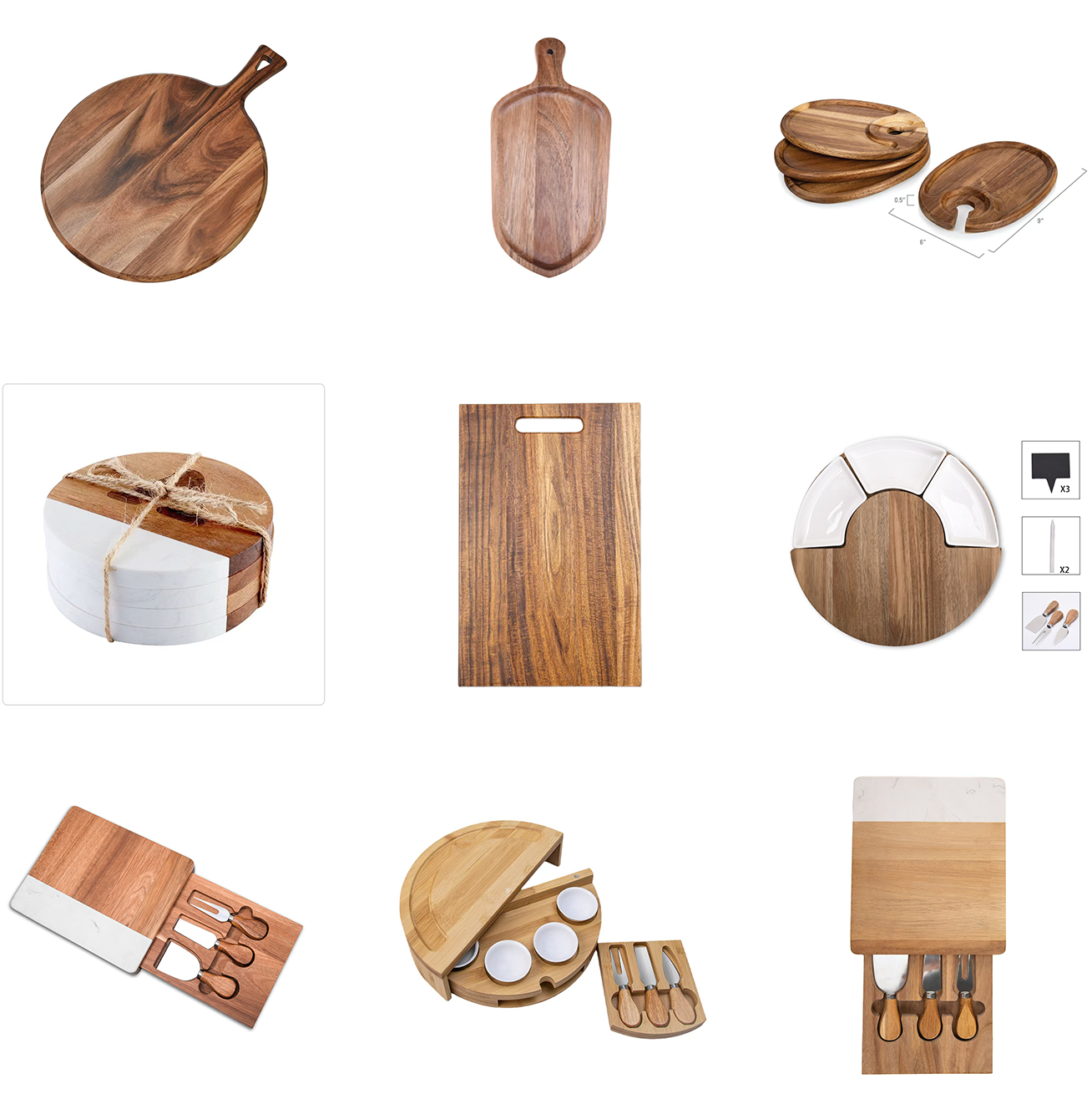

Yangjiang Cuthaven Kitchenware Co.,Ltd
Yangjiang Cuthaven Kitchenware Co.,Ltd.
specializes in the production and export of high-quality metal and wooden kitchenware. With over 16 years of experience in the industry, we have established ourselves as a trusted partner for businesses worldwide.








